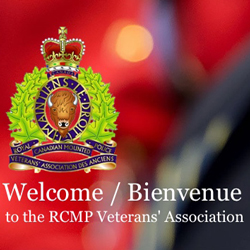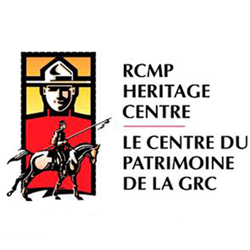S/Sgt. Orrin Wells Evans – Reg.#328
As for most members who join the Force, they were attracted to the organization for an opportunity to travel and experience some adventure. One such individual was Orrin Evans.
During his 29 years in the Force, Orrin had the opportunity to apply his skills and abilities to carry out a mammoth logistical challenge in the Yukon.
EARLY YEARS
Orrin Wells Evans was born on August 15, 1864 at Low Quebec. His early life and family remains a mystery. However in the 1891 Canadian Census, Orrin confirmed that he was born in Quebec and outlined that both his parents were living in the United States.
JOINS FORCE
On June 9, 1879, Orrin Evans walked into the North West Mounted Police recruiting office in Ottawa and applied for the Force. At the time of his application, he listed his previous occupation as a Blacksmith. After passing his medical examination, Orrin was provided transportation to the Canadian North West Territories where he was officially sworn in at the North West Mounted Police headquarters in Regina and assigned the regimental number 328.

Image of Constable Orrin Wells Evans’ North West Mounted Police Oath of Allegiance and Oath of Office document (Source of image – Library Archives Canada – NWMP Personal Files).
The West was the new frontier – the NWMP was making it a better place in which to live. “Orrin longed for the excitement of the open prairie.”
From 1879 to 1882, Orrin was posted to Wood Mountain. However in 1882, he was forced to purchase his discharge ($100.00) after his father’s death and was required to help support his mother. According to his discharge documentation, Orrin was heading to Polar River Montana.
While out of the Force, Orrin got married but tragically his wife died shortly thereafter. Orrin was listed in the 1891 Census as a widower living in Winnipeg and was employed as a blacksmith. Being bored with civilian life, he re-engaged in the Force on April 24, 1893 and was posted to Lethbridge where he remained for the next five years.

1894 – Photograph of the some NWMP working members at “E” Division Lethbridge (Source of photo – RCMP Veterans’ Association – Vancouver Division’s Photo Collection).
With the discovery of gold in the Yukon, the Force deployed most of its members to the Yukon. Orrin was one of these members. His first posting was to Dawson then would eventually be transferred to Tagish, Carcross and then Whitehorse. During his time in the Yukon, he demonstrated his artisan skills by building boats, docks, buildings, and furniture.

Photograph a young Orrin Wells Evans (Source of photo – Barbara Schwabe: great great grand daughter of Orrin Evans).
While stationed in Dawson, Orrin’s administrative abilities (i.e. organizing incoming and outgoing mail and other administrative duties) were recognized by Sam Steele who promoted Orrin to the rank of Corporal on April 29, 1899. A year later (January 1, 1900), he was promoted to Sergeant and was recognized as having the “best mileage report of any detachment in the Division.”
After only two years of the “H” Division Headquarters operating at Tagish Yukon, the community was practically abandoned with the completion of the railway from Skagway to Whitehorse. With the approval of the Canadian government, the “H” Division Headquarters was moved to Whitehorse in 1900. With this move, a new NWMP barrack complex was required.

1902 – Photographs of the NWMP senior NCOs stationed at Dawson, Yukon. Sergeant Orrin Evans’ image is circled in red (Source of photo – RCMP Veterans’ Association – Vancouver Division’s Photo Collection).
To minimize the constructions costs for the government, it was decided to move the NWMP building in Tagish to Whitehorse.The task of relocating the Tagish barrack buildings to Whitehorse was delegated to Sergeant Orrin Evans.
“Transfer of “H” Division headquarters was not painless. By the time a site was selected in downtown Whitehorse in 1990, it was early fall – not the best time to move into tents. The police dismantled many of the Tagish buildings and attempted to raft the logs to Whitehorse. The rafts proved too large for Miles Canyon, so they had to be taken apart and rebuilt at Canyon City. Even then, three rafts shattered ion the turbulent rapids of the canyon. The logs drifted past Whitehorse. The NWMP then called on the engineer and carpenters of the Department of Public Works for help. Using lumber purchased from local mills, Mounties and DPW employees managed to erect eight buildings by November.”

1902 – Photograph of NWMP members at Whitehorse moving a building at their new “H” Division Headquarters.
On April 1, 1908, Inspector Arthur Snyder promoted Orrin Evans to the rank of Staff Sergeant for completing the barracks complex at Whitehorse and the complex is illustrated below.
By 1910, only 50 NWMP members remained in the entire Yukon because the gold rush was over. Force members were re-deployed to other areas for country. Orrin Evans remained in the Yukon and was transferred to Dawson where he was promoted to the rank of Sergeant Major. Despite being a bit of a disciplinarian, Orrin requested and received a reduction of rank back to Staff Sergeant on February 28, 1915. It was his desire to get back to Detachment work.
From Dawson City, he was transferred to Lethbridge where he served until his retirement on October 21, 1919. This retirement was undertaken when the government changed the retirement regulations which increased pensions based on specified terms of service. Only after Orrin had retired did he realize that his maximum benefit would not materialize because he was short in service by only 7 days. To correct this situation, Orrin petitioned Commissioner Bowen Perry to be re-engaged back into the Force at the rank of Staff Sergeant for only 7 days.

Photograph of NWMP Sergeant Orrin Evans (Source of photo – Barbara Schwabe: great, great grand daughter of Orrin Evans).
At the time, Orrin was described as “a good general artisan, conscientious, sober, manly, painstaking and has saved the Government thousands of dollars during his service.”
In view of his dedicated service and with the support of Privy Council, Orrin Evans was re-engaged back in the Force for 7 days and retired shortly thereafter. Illustrated below is Orrin’s RNWMP Discharge Certificate.

Copy of the North West Mounted Police Discharge Certificate for Orrin Wells Evans (Source of image – Library Archives Canada – NWMP Personal Files).
In 1919, Orrin’s pension was $973.30 per year and was later increased to $1,155.83 in 1930 through an amendment to the RCMP Act.
IN RETIREMENT
At the time of his retirement, Orrin was 63 years old and had indicated to the Force that he was heading to Vancouver for his retirement.
Once in British Columbia, he decided to make his home in Keremeos and built himself a home on Main Street. Apparently, he kept his home in good repair and it was furnished with fine furniture that he had built himself. His favourite hobby was his garden.

Photograph of Orrin Evans’ house in Keremeos BC. (Source of photo – Barbara Schwabe – great great grand daughter of Orrin Evans).
With the outbreak of World War II, the Commissioner put out a call for volunteers to the Force Veterans across Canada. Based on this call-out, Orrin Evan submitted his application for service on August 29, 1939 and a copy of this letter is included below.

1939 – Copy of Orrin Evans’ volunteer message to the Commissioner of the RCMP (Source of copy – Library Archives Canada – NWMP Personal Files).
On September 6, 1939, Orrin received a response message from the Force on his application: “With reference to your letter of the 29th of August offering your service to this Force, it is regretted that we are unable to utilize same. Your offer is, however, very appreciated.” – signed Inspector F. Hobbs Assistant Adjutant for the RCMP.
On December 15, 1949, Orrin passed away at the age of 93 and 4 months. Prior to passing away, he had hired Mrs. Edith Milloy of Keremeos to care for him. In recognition for her dedicated assistance, Orrin left Mrs. Milloy the sum of $500 in his Will.
In the April 1950 edition of the RCMP Quarterly, an obituary tribute was written for Orren Evan and it stated “his services to the Force in those early important days – his personal contribution to the development of Canada’s northland – we find there are too many blanks pages in his history. And on those pages could be written much that belongs to the early history of the NWMP. Perhaps it would be simplest to echo the words of Thomas Carlyle: ‘Nothing that was worthy in the past departs; no truth or goodness realized by man ever dies, or can die; but is all still here, and, recognized or not, lives and works through endless changes.‘”
Orrin’s great grand daughter discovered a card forwarded to Orrin from a woman he met back in 1904-05. The card pages are included here to provide a glimpse of the earlier life of Orrin.

Photograph of the card cover received by Orrin by an old female friend in Alberta (Source of photo – Barbara Schwabe).


 April 8, 2015
April 8, 2015 













